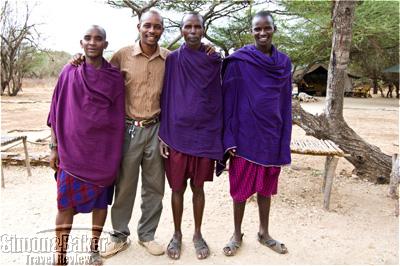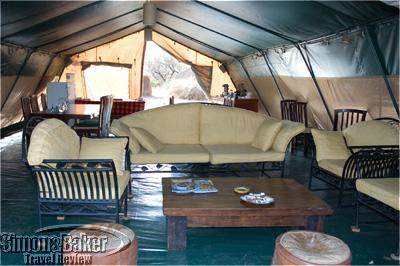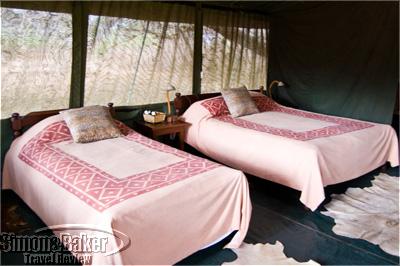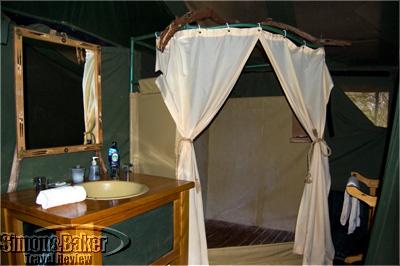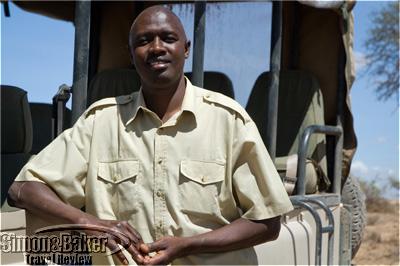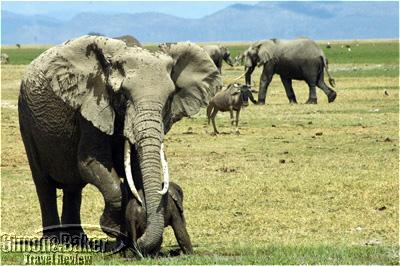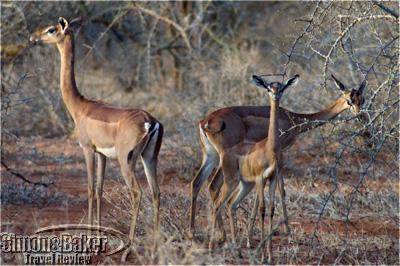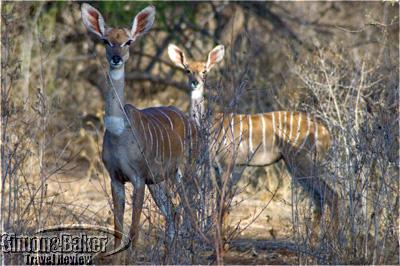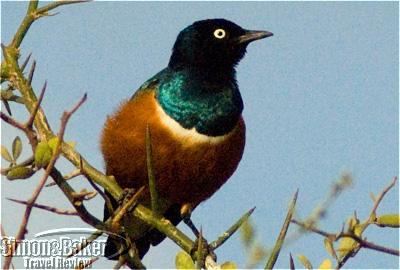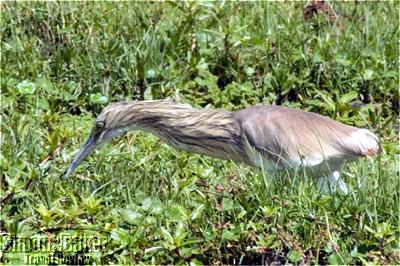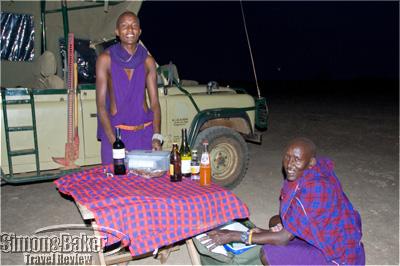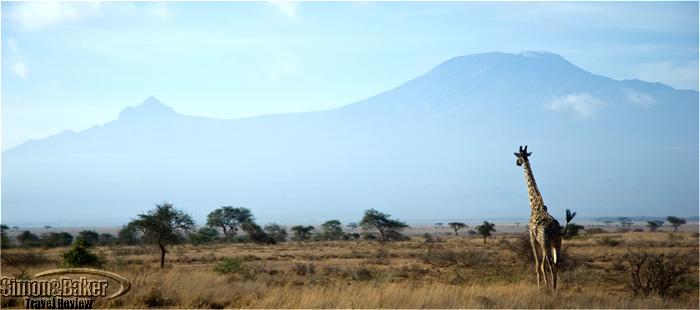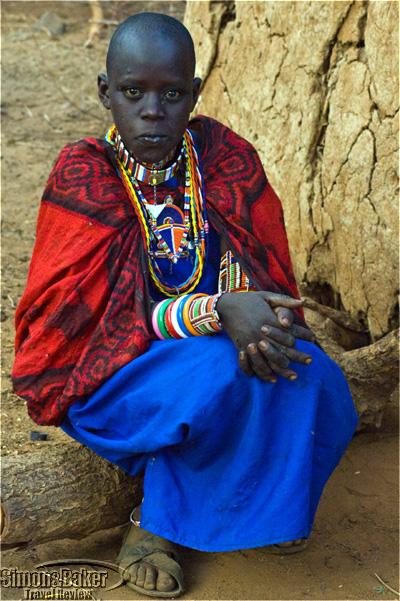
This proximity to the local Masai community was unique at Amboseli Porini Camp. The camp was a cooperative venture between its owners, Gamewatchers Safaris and the Kisonko clan of the Masai people who owned the Selenkay conservation land. Aside from the camp management and the head chef, all members of the staff were local Masai. I had several opportunities to walk with Masai warriors who discussed with me various aspects of their culture, traditions and how indigenous natural resources were used by the community. I was able to interact with the men, women and children of the village, visit their homes, observe the activities of their daily lives and enjoy their ceremonial songs and dances. This alone would have made my visit to Amboseli Porini Camp an exceptional experience. But it was only one part of the overall program.
The next morning found me in one of the camp’s custom-designed open-sided Land Rovers on the private four-wheel-drive track that linked the Conservancy to Amboseli National Park. The abundance and variety of game was startling in the conservancy as well as the park: lions, cheetahs, caracals, hyenas, buffalos, zebras, wildebeests and gazelles galore; and bird species too numerous to recall. Most thrilling of all was the dense elephant population. At recent count, more than 1,000 of the great pachyderms were said to live in the park, many of them on the move wherever I went; large swaying herds stirring red dust across the plain, unerringly heading toward the grassy swamp in the distance. Unconcerned by our presence, they sometimes came so close to our vehicle that I felt tempted to reach out. I was back at camp with time to relax before heading out again to just the right vantage point to enjoy the stunning African sunset. An unhurried night drive followed, a great opportunity to observe the nocturnal fauna.
My time at Amboseli Porini was everything I had imagined a Kilimanjaro safari should be: legendary vistas, superb game viewing, comfortable accommodations in an environmentally responsible setting, knowledgeable local guides and warm and attentive staff. It was an experience I will recommend as a “must” to environmentally and socially conscious friends planning a visit to Kenya.
Class Of Accommodation Luxury tented bush camp
Communications There was no Internet connection at the camp. Bluetooth and mobile phone service was unreliable. When available, it required a GSM 900/1800 compatible international cellular phone.
Handicapped Access Handicapped guests could be accommodated by prior arrangement on a case-by-case basis.
Length Of Stay Three nights
Location In the Selenkay Conservancy, a private reserve adjacent to the north side of Amboseli National Park, 150 miles (240 kilometers) southeast of Nairobi.
Owned-Managed Gamewatchers Safaris (Jake Grieves-Cook was the managing director)
Power All electricity was solar generated. The tents had electric lighting, but not sufficient power to charge batteries. Batteries for cameras, telephones and laptops could be charged from a small solar-powered generator in the camp manager’s office tent.
Size The 10 acre (four hectare) camp consisted of nine guest tents capable of accommodating up to 18 guests. It employed a staff of 28, including three guides and three spotters.
Year Open-Renovated The camp opened in 1997. The common tent and six of the nine guest tents were replaced in 2007. The remainder were refurbished in 2007 and scheduled for replacement in 2009.
Room My 360 square foot (33.5 square meter) tent, Number Eight, sat on level, sandy ground covered with weatherproof floor matting. The tent entrance was the usual zippered “door.” Side walls were zip-up flaps over mosquito-netting covered panels for an airy feeling and excellent ventilation. Inside, two double beds with wooden headboards, each with their own bedside table and reading lamp occupied one side of the tent. The opposite side held a writing desk with a canvas armchair. A partition separated the sleeping room from the bathroom. It held an open-front armoire with storage shelves and a clothes-hanging rod and a luggage rack. Cowhide throw rugs covered the floor matting. Indoor lighting was produced through solar electricity. In front of the tent, a large awning-shaded area with two canvas chairs and a small wooden table was a tranquil spot to relax and watch the many birds that visited the acacia canopy above.
During my visit, I sighted: elephant, lion, cheetah, zorilla (a.k.a. stripped polecat), white-tailed mongoose, serval cat, caracal, bat-eared fox, ground squirrel, Masai giraffe, Burchell’s zebra, warthog, spotted hyena, vervet monkey, yellow baboon, common duiker, Kirk’s dik dik , lesser kudu, eland, fringed-ear oryx, wildebeest, impala, Grant’s gazelle, Thompson’s gazelle, gerenuk, buffalo, flap-neck chameleon. Birds included: Masai ostrich, Sacco heron, green-backed heron, marabou stork, hammerkop, lilac-breasted roller, Egyptian goose, red-billed teal, sacred ibis, black kite, African jacana, lappet-faced vulture, crested crane, black-chested snake eagle, tawny eagle, pigmy falcon, red-billed hornbill, golden pipit, red-billed oxpecker, kory bustard, buff-crested bustard, black-winged stilt, blacksmith plover, African mourning dove, white-bellied go-away bird, little bee-eater, superb startling, white-headed buffalo weaver.
Other Because of the proximity to wild game, children had to be at least nine year old to stay at the camp.
Amboseli Porini Camp was run and maintained according to strict responsible tourism guidelines regarding conservation of the environment, management of resources, solid waste and sewerage disposal as well as providing development opportunities for the local community. At the time of my visit 90 percent of the staff was local Masai, including a chef and chef-apprentice. The three spotters were studying for guide certification, and several members of the household staff were being trained for game spotters and in-camp visitor-facing functions.
Shortly after my visit Porini Safari Camps and its parent company Gamewatchers Safaris were honored with the Responsible Tourism Award for “Best for Conservation of Endangered Species outside Protected Area” at the World Travel Market in London. The award, sponsored by Virgin Holidays, recognized Porini/Gamewatchers “for demonstrating that a high revenue, low impact tourism development approach can benefit the local Masai through developing conservancies and tourism in partnership with safari companies to create employment and community income and to conserve their land for wildlife.”
Date Of Last Visit November 2008
Reviewers Article and photographs by Josette King
Service My tent was serviced twice daily, a morning cleaning and evening turn down service . Every member of the staff was consistently attentive, friendly, helpful and professional.
Would You Stay There Again? Yes
Contact Information
- Porini Safari Camps
- Village Market Complex
- P.O. Box 388-00621
- Nairobi, Kenya
- + 254 (20) 7123129
- + 254 (20) 7121851
- + 254 (20) 7122504
- + 254 (20) 7120864
